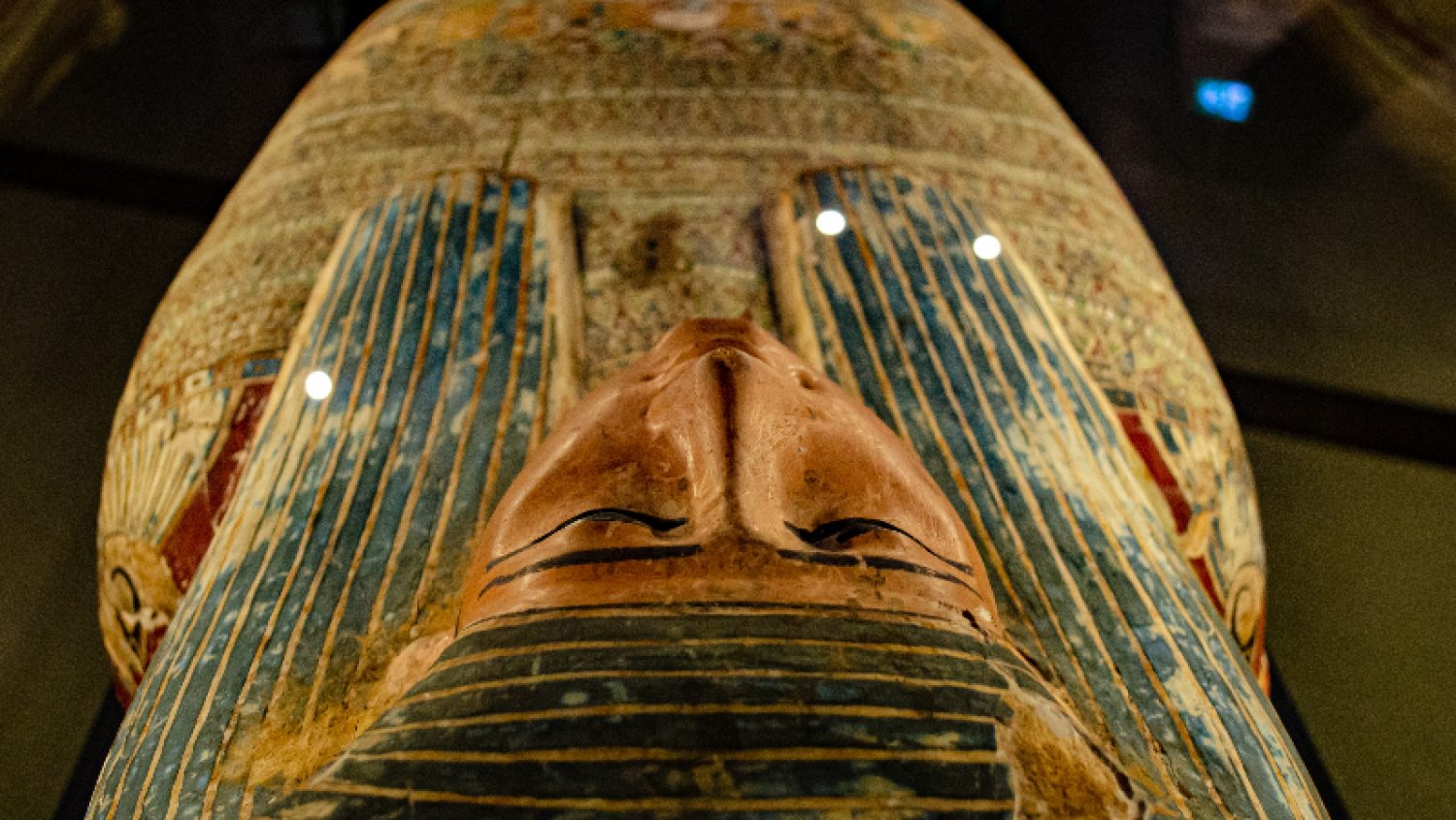Three minute read
Embalming says a huge amount about how we understand death. Although Poppy's natural approach to death means we rarely embalm people in our care, we will help clients who want to work with an embalmer.
Here are five incredible ways that people have preserved bodies throughout history.
1. Egyptian mummification
Many of us are familiar with mummification from primary school projects or from the British Museum's world-famous exhibition of mummies.
Mummification was an important part of religious life in Ancient Egypt and was meant to create a comfortable afterlife for the spirit. First, the internal organs were removed and preserved in containers called canoptic jars, which were buried with the mummy in the tomb. Only the heart was left inside the body because the Egyptians believed it was the centre of a person’s being.
The next step was to dry out the body using a type of salt called natron. Once all of the moisture was gone, the priests wrapped the body in layers of linen, often including magical amulets and written prayers. Because the process was so elaborate, it was also expensive, which meant that it was often reserved for officials and members of the nobility.
2. Cinnabar
Cinnabar is a bright red mineral which is also sometimes known as vermillion. Not only is cinnabar strikingly beautiful, it may once have been used to help preserve bodies.
At a burial site known as ‘La Velilla’ in Spain, archaeologists discovered 5,000 year-old human bones that had been coated in pulverized cinnabar. This makes the use of cinnabar the oldest preservation technique ever recorded in Europe.
3. Mellification
Mellification, or the use of honey to preserve bodies, is a technique that’s often shrouded in myth. The ancient Greek historian Herodotus claimed that the Assyrians used honey to embalm. Alexander the Great was also rumoured to have been preserved in a golden coffin filled with honey.
Whether or not these stories are true, there’s a sound basis for linking honey and preservation. Not only does honey have antiseptic properties, the high sugar content also helps to dry out microbes.
There’s also evidence that honey may have been used in burial rites. In the country of Georgia, archaeologists discovered honey-preserved offerings in a Bronze Age grave. Berries, nuts and baskets had all been deliberately coated in honey.
Intriguingly, it seemed as though the bones may have been covered in honey too — giving weight to mellification’s place in history.
4. Alcohol and herbs
While embalming isn’t often associated with the Middle Ages in Europe, it was certainly practiced. Methods often involved removing the internal organs and immersing the body in alcohol.
Herbs and spices were also frequently included, either for their sweet smell or presumed preservative properties.
Death was often very public during the Middle Ages and these techniques helped prepare bodies for display.
5. Modern embalming
Science has been a driving force in preserving bodies. During the Renaissance in Europe, anatomists wanted bodies to dissect — which also meant finding ways to keep them for longer periods of time.
While many early methods weren’t very effective, research into different preservatives and the discovery of arterial injection paved the way for modern embalming methods.
Today, embalming replaces all of the body’s natural fluids with a preservative liquid, which includes pink dye and usually formaldehyde. Embalmers also use stitches to close someone’s jaw, and spiked eye-caps to keep the eyelids shut.
It’s important to remember that there’s usually no legal or hygienic reason for embalming someone (repatriation being the one exception). But the long history of preserving bodies still provides a fascinating insight into how we understand and treat our dead.
Read more about from our blogs about why you don't need to embalm and why embalming should be about consent.
To stay in touch with all the latest news and updates from Poppy's by email, sign up here or contact us if you need help planning a funeral.
Photo by Narciso Arellano on Unsplash.
